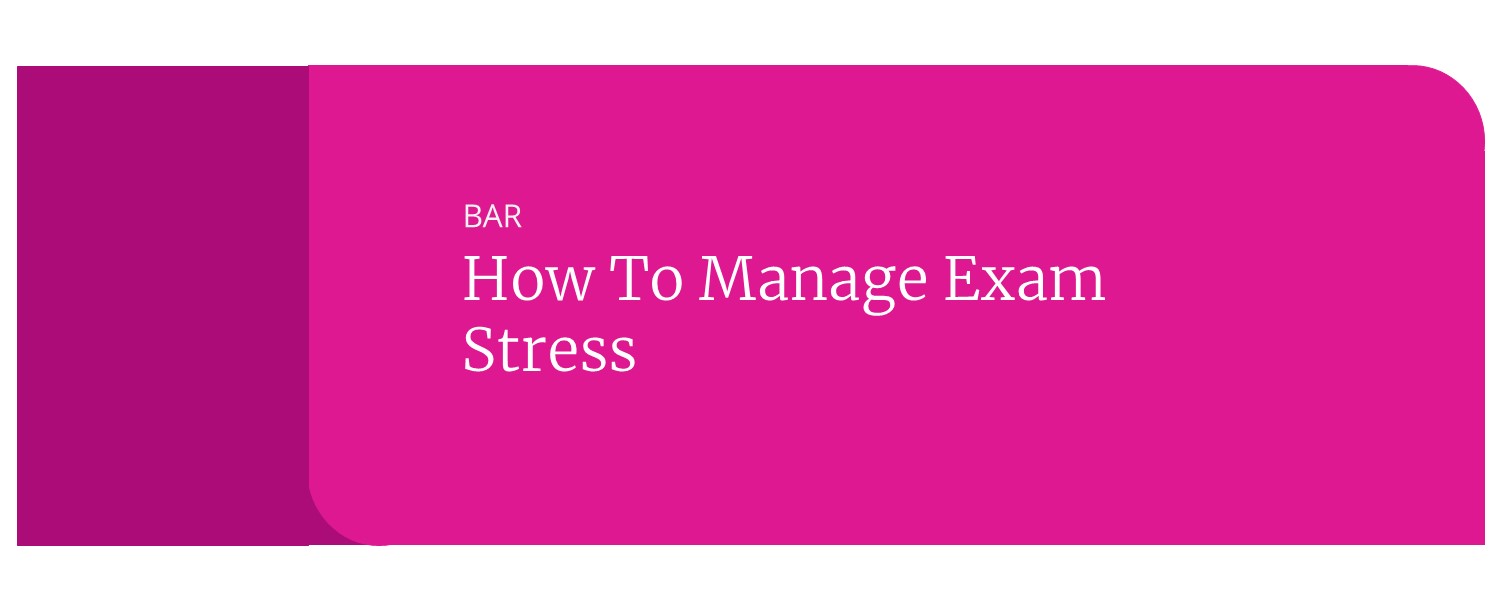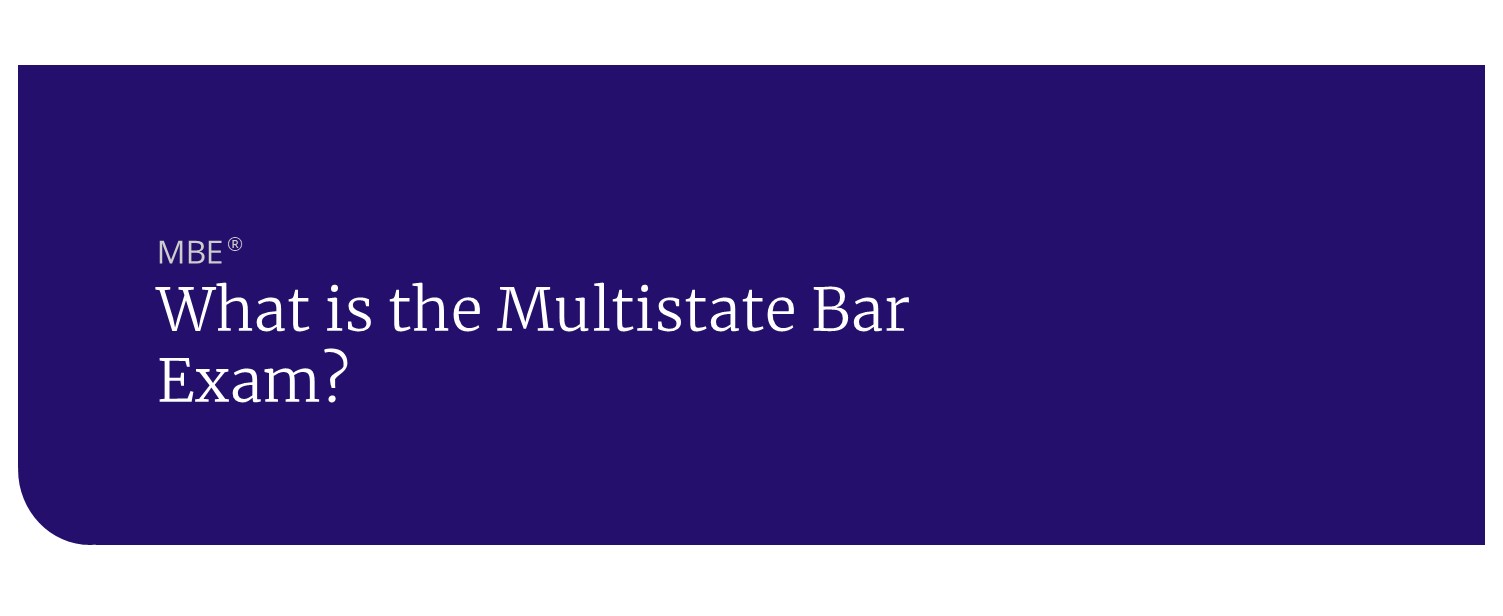MBE vs. UBE®: What’s the Difference?
The Multistate Bar Examination (MBE) is sometimes mistaken for the Uniform Bar Examination (UBE), but they are not the same. The MBE is actually one component of the three-part UBE.
The UBE, developed by the National Conference of Bar Examiners (NCBE), is the standardized bar exam that many jurisdictions use to license new attorneys. It is designed to measure the knowledge, skills, and abilities essential for the practice of law. The UBE is made up of three parts:
- Multistate Bar Examination (MBE) – multiple-choice component
- Multistate Essay Examination (MEE) – written essay component
- Multistate Performance Test (MPT) – practical skills component
Below, we break down how the MBE fits into the UBE, the differences between the two, and why this distinction matters for your bar exam preparation.
Key Differences Between the MBE and the UBE
While the MBE and UBE are closely related, they serve different purposes in the bar exam process:
Test Format
- UBE: Two-day exam including the MBE, MEE, and MPT.
- MBE: Six-hour exam with 200 multiple-choice questions, administered in two three-hour sessions in the morning and afternoon.
Jurisdictions
- UBE: Currently adopted by 41 jurisdictions.
- MBE: Administered in nearly all U.S. jurisdictions, with the exception of Louisiana and Puerto Rico.
Score Portability
- UBE: Allows you to transfer your entire score to other UBE jurisdictions, provided you meet each jurisdiction’s admission criteria.
- MBE: Score can be transferred to participating jurisdictions through the NCBE’s Score Transfer service.
The MBE’s Role in the UBE
The MBE is the most heavily weighted portion of the UBE–accounting for 50% of the total score in most jurisdictions. It is also widely regarded as the most challenging section.
The exam is designed to assess your ability to:
- Apply fundamental legal principles.
- Exercise legal reasoning.
- Analyze complex fact patterns.
The MBE was introduced in 1972 as a uniform multiple-choice test to ensure fairness and consistency across jurisdictions, replacing the “diploma privilege” era in some states.
When it’s administered, the UBE takes place over two days, with the MBE given on the last Wednesday of February and July.
MBE Score Portability
One advantage of passing the MBE is the ability to transfer your score to another jurisdiction–eliminating the need to retake the exam if you move. However, score portability is not available in every jurisdiction.
How to Transfer Your MBE Score:
- Check Jurisdiction Eligibility: Confirm if the jurisdiction you’re applying to accepts transferred MBE scores and whether they have additional requirements.
- Confirm Release From Your Testing Jurisdiction: Make sure the jurisdiction where you took the MBE authorizes the NCBE to transfer scores. If not, contact them directly.
- Submit a Request Through Your NCBE Account: Go to the “Score Services” section and complete a score transfer request.
- Pay the Fee: Once payment is received, the NCBE processes most score transfers by the next business day.
What Else Does the MBE Include?
The UBE combines the MBE with two additional components, each weighted differently in your total score:
| UBE Component | Weight | Exam Format | Question Types |
| Multistate Bar Examination (MBE) | 50% | Two 3-hour sessions (AM & PM) | 200 multiple-choice (175 scored, 25 pretest) |
| Multistate Essay Examination (MEE) | 30% | One 3-hour session in most jurisdictions | Six 30-minute essay questions |
| Multistate Performance Test (MPT) | 20% | One 3-hour session in most jurisdictions | Two 90-minute practical skills questions, each with a File and a Library |
Note: Some non-UBE jurisdictions use different scoring weights. Always check your jurisdictions official scoring guide for details.
Jurisdictions That Administer the MBE
With the exception of Louisiana and Puerto Rico, all U.S. jurisdictions administer the MBE. This includes both UBE and non-UBE states, making the MBE a near-universal component of bar licensure.
Because of it’s widespread adoption, the MBE has become the closest thing to a national standardized component of the bar exam. This means:
- Most bar takers in the U.S. will need to prepare for the MBE, regardless of whether they plan to practice.
- Lawyers who relocate to another state may be able to transfer their UBE score (subject to jurisdiction rules) instead of retaking it.
- Law schools nationwide integrate MBE-style questions into their curriculum because of its universal importance in bar readiness.
If you’re unsure whether your jurisdiction requires the MBE, check the NCBE’s official list of jurisdictions or your state’s bar admission office for the most up-to-date policies.
Prepare for the MBE and UBE with Kaplan
No matter where you plan to take the bar exam, mastering the MBE is essential. In UBE jurisdictions, it makes up half your total score–and even in non-UBE states, it’s a major factor in whether you pass or fail. A strong MBE score can also make it easier to transfer your results if you move to another state.
Kaplan’s comprehensive bar prep resources are designed to help you excel on both the MBE and the full UBE:
- MBE QBank: Practice with hundreds of realistic multiple-choice questions that mirror the difficulty, style, and timing of the actual MBE.
- UBE Complete Course: Get structured lessons, full-length simulated exams, and guided practice for all three UBE components.
Whether you need targeted MBE practice or a full UBE prep program, Kaplan offers the tools and guidance to help you pass the bar exam on your first try.






